News
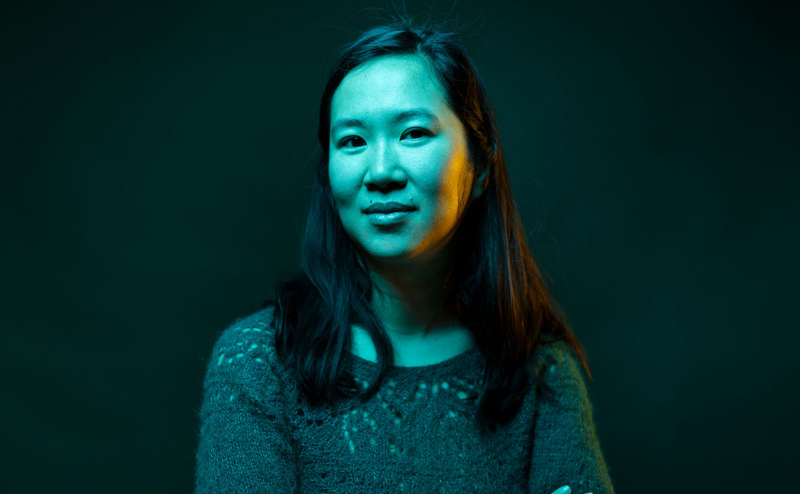
Céline Khy, from photo retouching to UX design
After fifteen years' experience in photo retouching, Céline Khy turned to UX design. Graduating from the GOBELINS UX Design certification in 2023, she is now a Product Designer.
Passionate about fictional design and sensitive to social issues, she shares her vision of UX with us.
You worked for 15 years as a photo retoucher before turning to UX. Why did you make this choice?
In the world of photographic post-production , you're mainly an operator. I was frustrated by not being able to use my creativity and imagination, and I didn't have the time to produce personal projects.
What I liked about UX was the opportunity to participate in product design from the earliest stages. UX also enabled me to stay in the digital field and transpose some of my skills, and it also saved me time in terms of training.
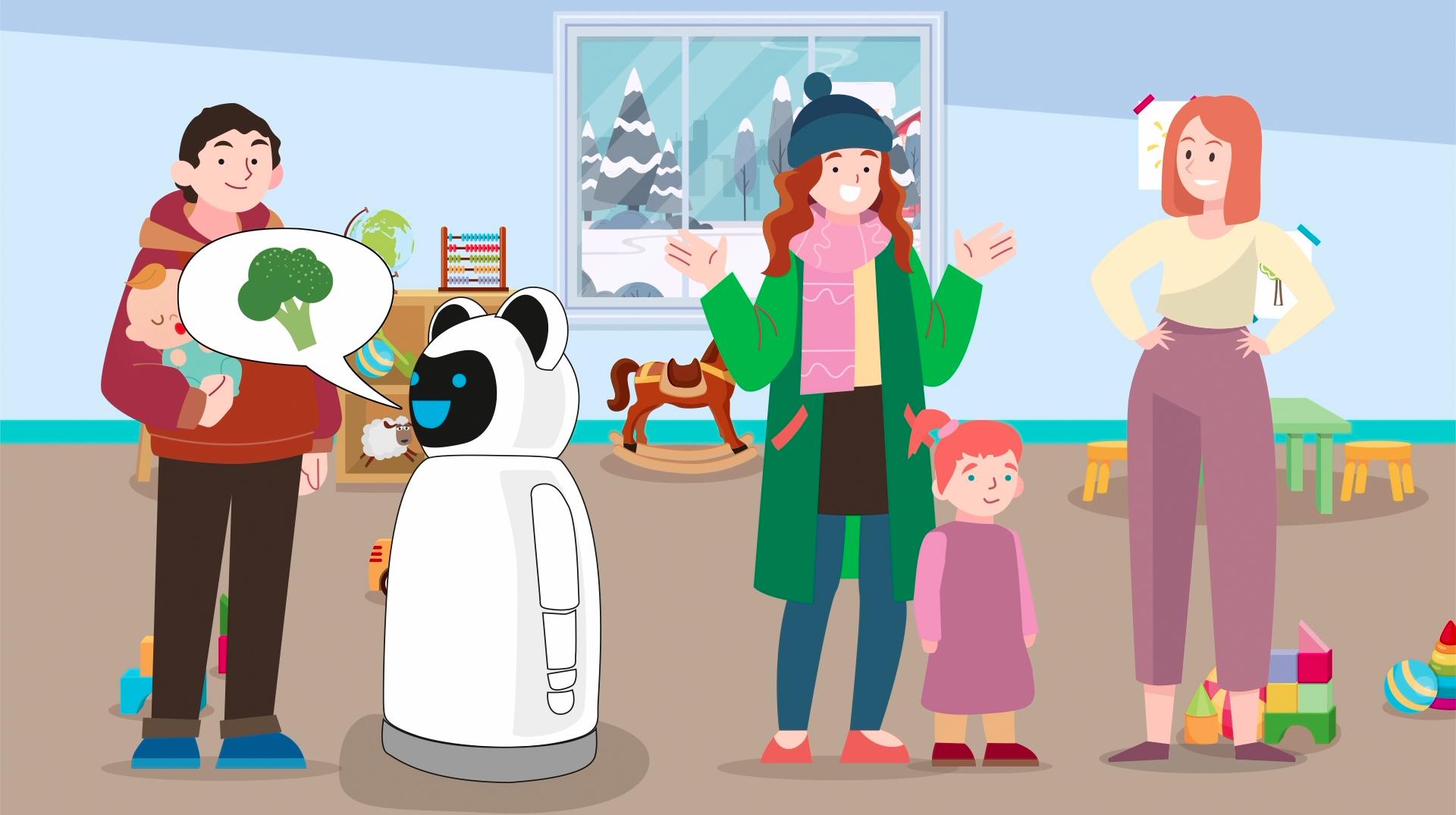
Design thesis project on the arrival of robots in crèches - ©Céline Khy
What's the link between retouching and UX?
In photography, you have to be observant and attentive, to be able to bring out the best in your subjects. There's a certain empathy involved. It's a quality that's important in UX, particularly in the user research phase, when you're going to interview people, gather their frustrations, their needs, and so on.
My experience as a photo retoucher has enabled me to go even further in my projects. I can create my own visuals, videos, animations... I have extra strings to my bow to be able to create prototypes, models and artifacts.
You're currently a Product Designer. What does your job involve?
The UX designer 's work focuses on the user experience. The Product Designer, on the other hand, will also take into account the product's business stakes , and ensure that the necessary human, technical and material resources are available for its development.
The Product Designer follows the project through its entire production cycle. He is the user's spokesperson. They listen to the user's needs and frustrations, and design appropriate solutions while respecting the customer's business model. He or she must be able to make compromises between user needs and economic reality to ensure the project's success.
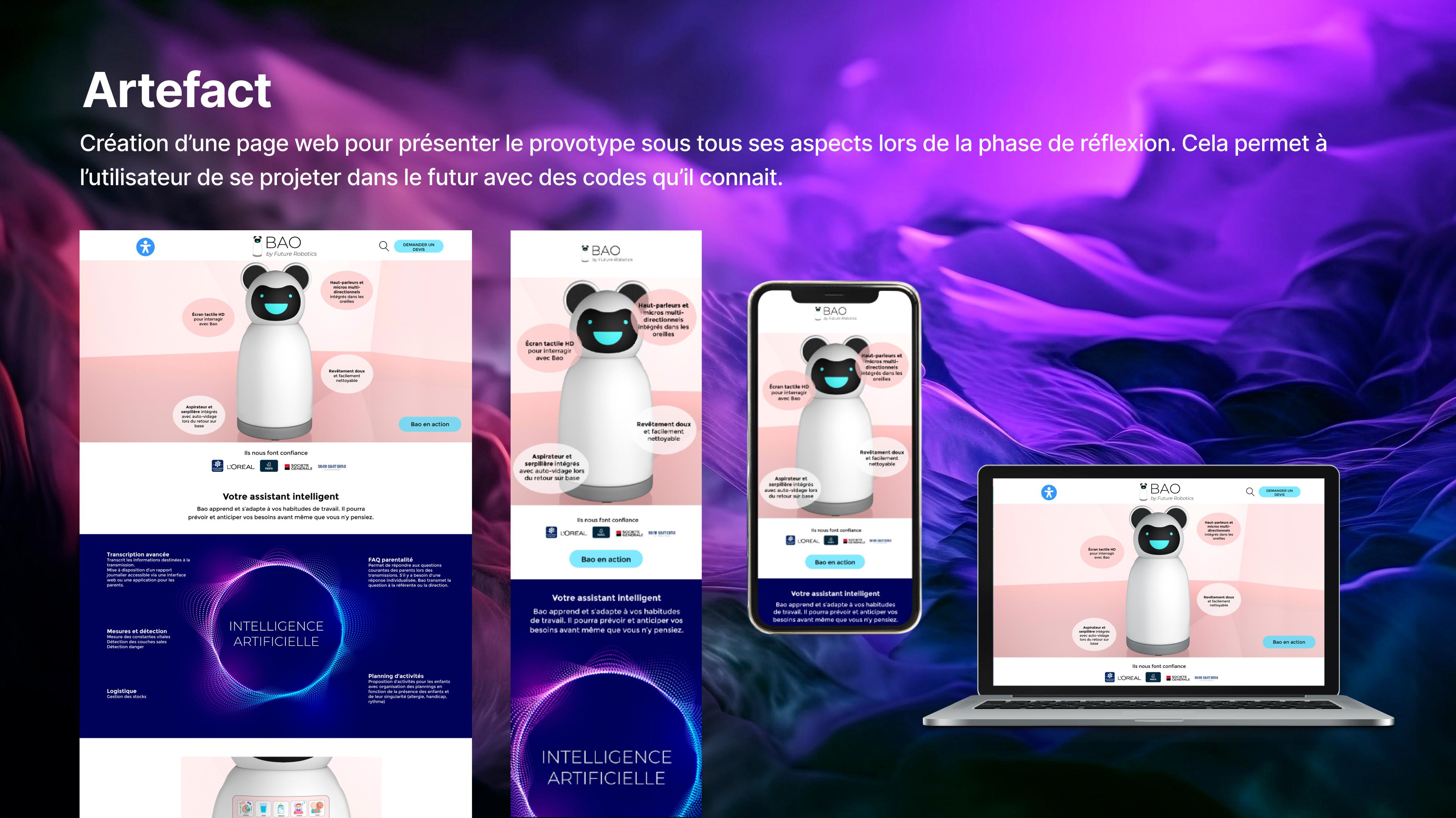
Robot prototype - Design thesis project on the arrival of robots in crèches - ©Céline Khy
You are currently working on the “Mamillie” project, which focuses on the mental health of young parents. Can you tell us more about it?
"Mamillie ", was developed following Strasbourg's Hacking Health Camp, a hackathon focused on health-related projects.
We won a support prize, which enabled us to be incubated in the project hive at the Strasbourg School of Management. We benefit from the support of professionals to help us mature our project and launch it when it's ready.
Our aim is to bring together senior citizens and young or future parents, who are sometimes at a loss when faced with this new adventure, and may be victims of isolation and/or depression. One of the most important pillars of perinatal care is what we call the support matrix. This refers to all the caring people who surround parents. Some homes have no or no longer any such matrix.
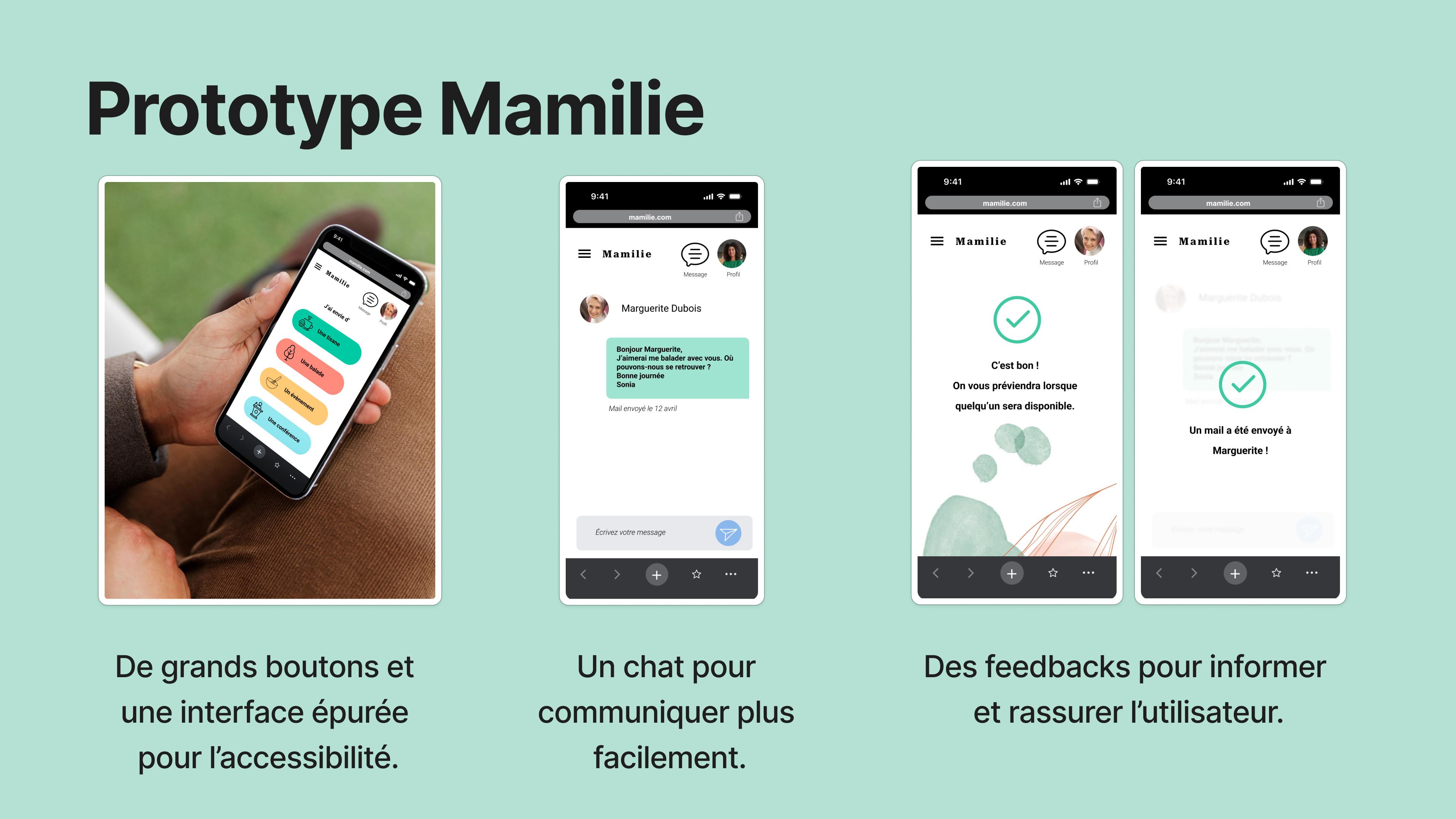
©Céline Khy
Furthermore, in France, 2 million people over the age of 60 suffer from isolation and are far from family and friends.
So we came up with a solution to create a local link between these two populations. "It takes a village to raise a child", we're trying to recreate this village to share moments together in an intergenerational way.
As Product Designer, I'm in charge of user research. I'll select the targets and then interview them to gather information that will enable us to organize design workshops.
The project will be developed in the private sector, which implies a question of profitability, so we also need to determine how our solution can generate revenue.
You worked on a design fiction project about staff shortages in crèches for your final dissertation. Can you tell us more about it?
Childcare is a big problem in France, and one I had to face myself as a young mother.
As childcare is a public service, we can't change things overnight, and we're subject to legislation that takes a long time. That's why I chose to treat this subject as design fiction. I didn't propose an immediately applicable solution, but rather a reflection on the problem.
Design fiction is a design thinking methodology that takes the user research phase one step further. We also carry out scientific and technological research on existing solutions, and research on weak signals, i.e. emerging behaviors related to the problem.
This method enables us to free ourselves from current economic, technological and political constraints, by imagining a solution that will be in place in 30 or 50 years' time. The proposed solutions may therefore call on fictitious technologies that have not yet been developed.
I've imagined a solution based onartificial intelligence and prototyped a robot that would integrate day-care centers. Thanks to the skills I'd acquired in my job, I was able to make a 3D model of the project, and I produced small advertisements to enable users to project themselves into the future.

Design workshop - Design dissertation project on the arrival of robots in crèches - ©Céline Khy
In design fiction, the test phase is replaced by a debate. The aim is not to solve the problem, but rather to ask whether the proposed solution is desirable and plausible. The next step is to think about what can be put in place today to make it work or not.
In the case of my project, my solution was not desirable, but it was plausible. The aim was toencourage participants to debate and reflect on the actions that need to be put in place to avoid a situation where robots take care of children.
That's why I chose to write my thesis in design fiction, so I could ask the question: this solution is going to happen, what can we do to prevent it?

3D modeling - Design thesis project on the arrival of robots in day-care centers - ©Céline Khy
Why did you choose to take the GOBELINS UX Design certification?
I have several Product Designer friends, and they all recruit graduates or certified graduates from GOBELINS. Coming from a photography background, I was already familiar with the initial training courses offered by the school. I chose GOBELINS certification because I was confident in the quality of the training.
The other advantage of the course was its duration (8 months). This length of time means that ideas can mature between each course. It's also a pace that's easier to keep up when you're salaried. I couldn't stop working for 3 months, so the rhythm of 3 training days a month is much more comfortable.
Can you tell us a good memory of the course?
We were divided into project teams. I had a great team. I have very fond memories of the friendships we made. We still see each other regularly. These get-togethers are a really good souvenir of the course.
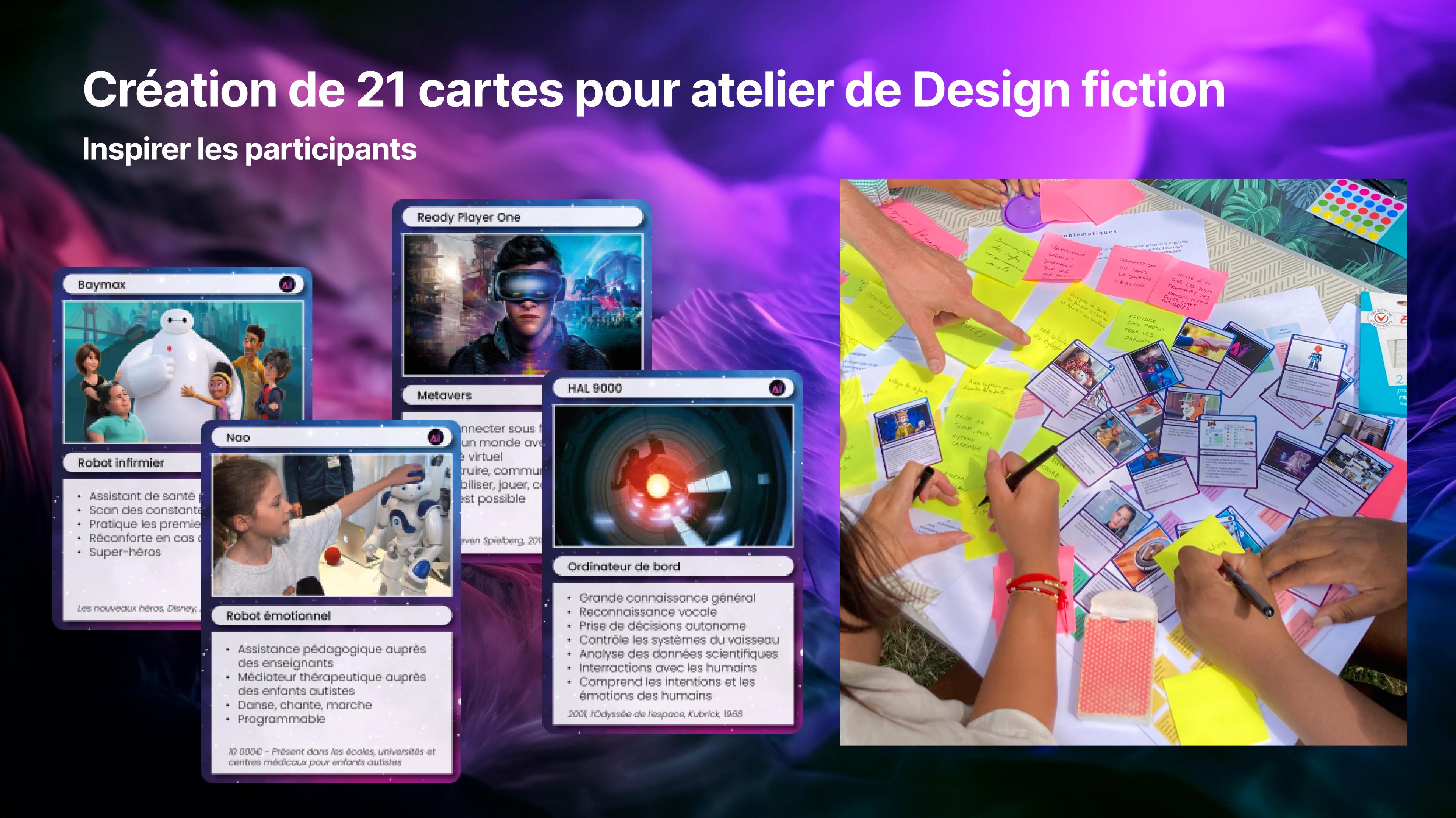
Atelier de design fiction - Design thesis project on the arrival of robots in crèches - ©Céline Khy
What advice would you give to a young product designer?
UX Design is a constantly evolving sector, so you always need to be on the lookout. There's more to learning than just training, you have to find the subject that interests you and continue to pursue it.
I've developed a passion for design fiction and I study the subject a lot, taking part in workshops and conferences, reading publications... And don't hesitate to socialize with senior product designers for advice.
 3
3
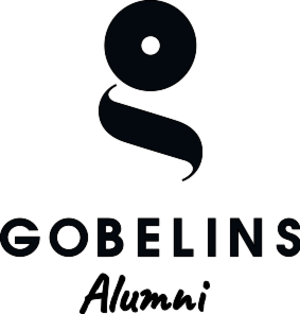











No comment
Log in to post comment. Log in.